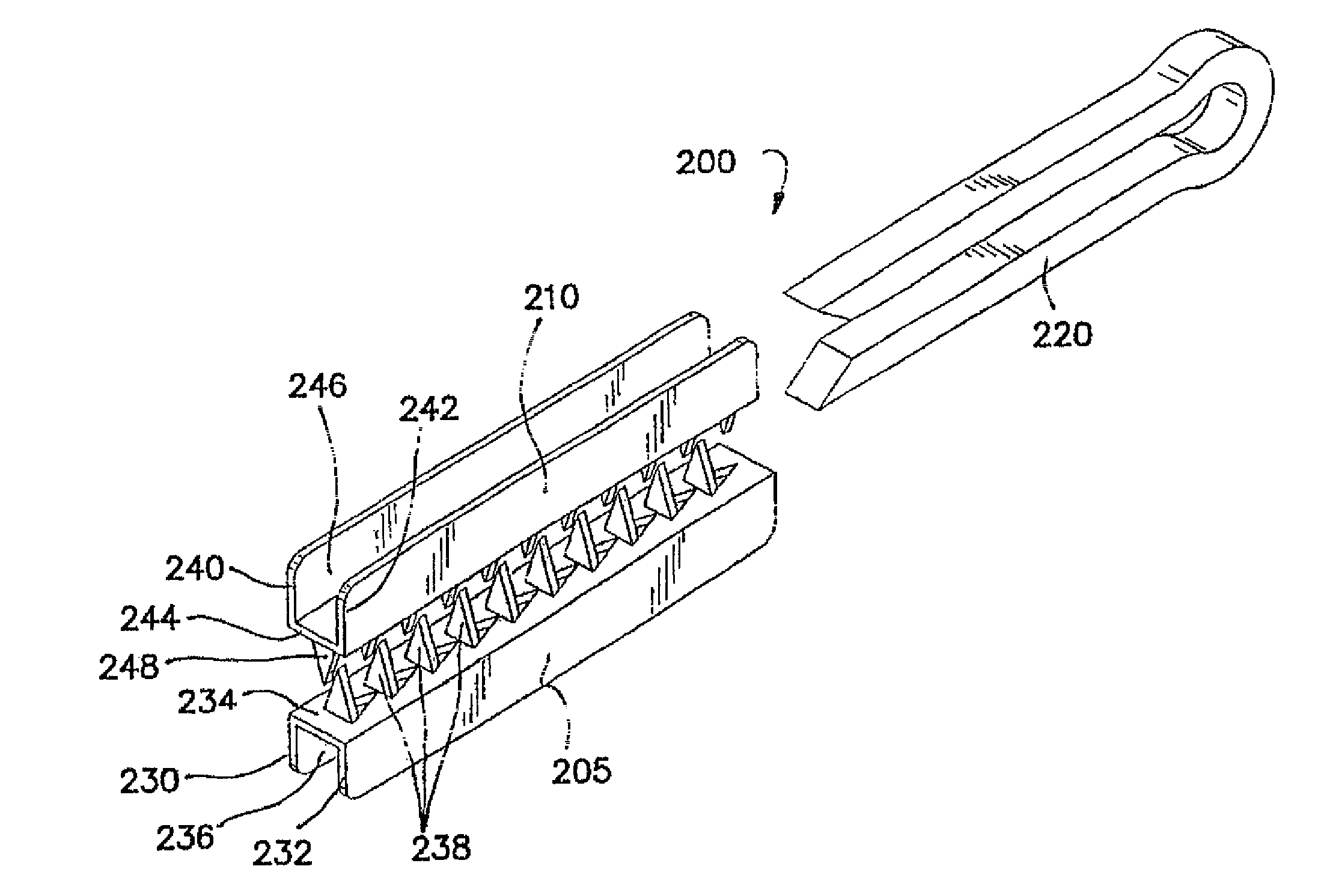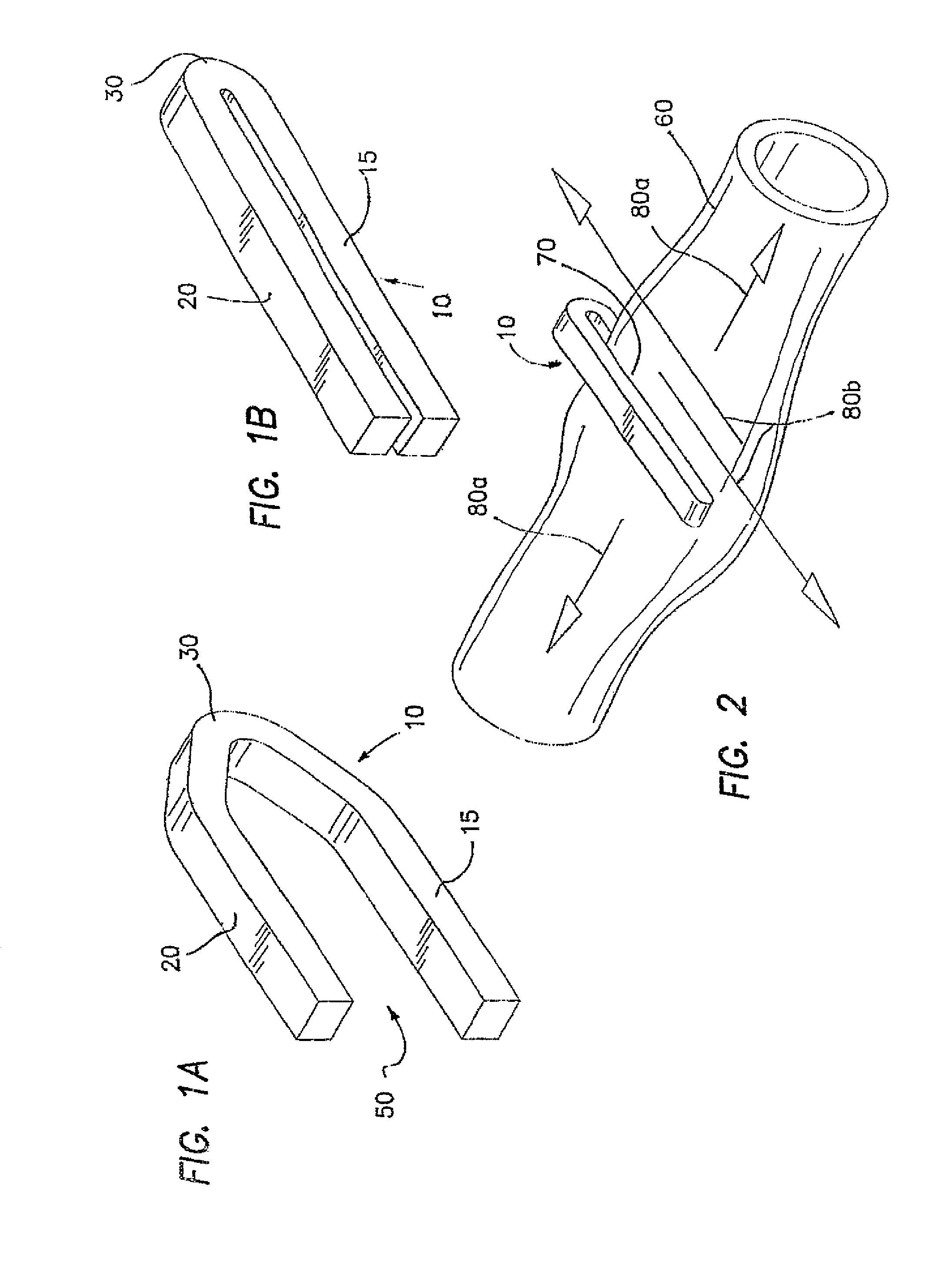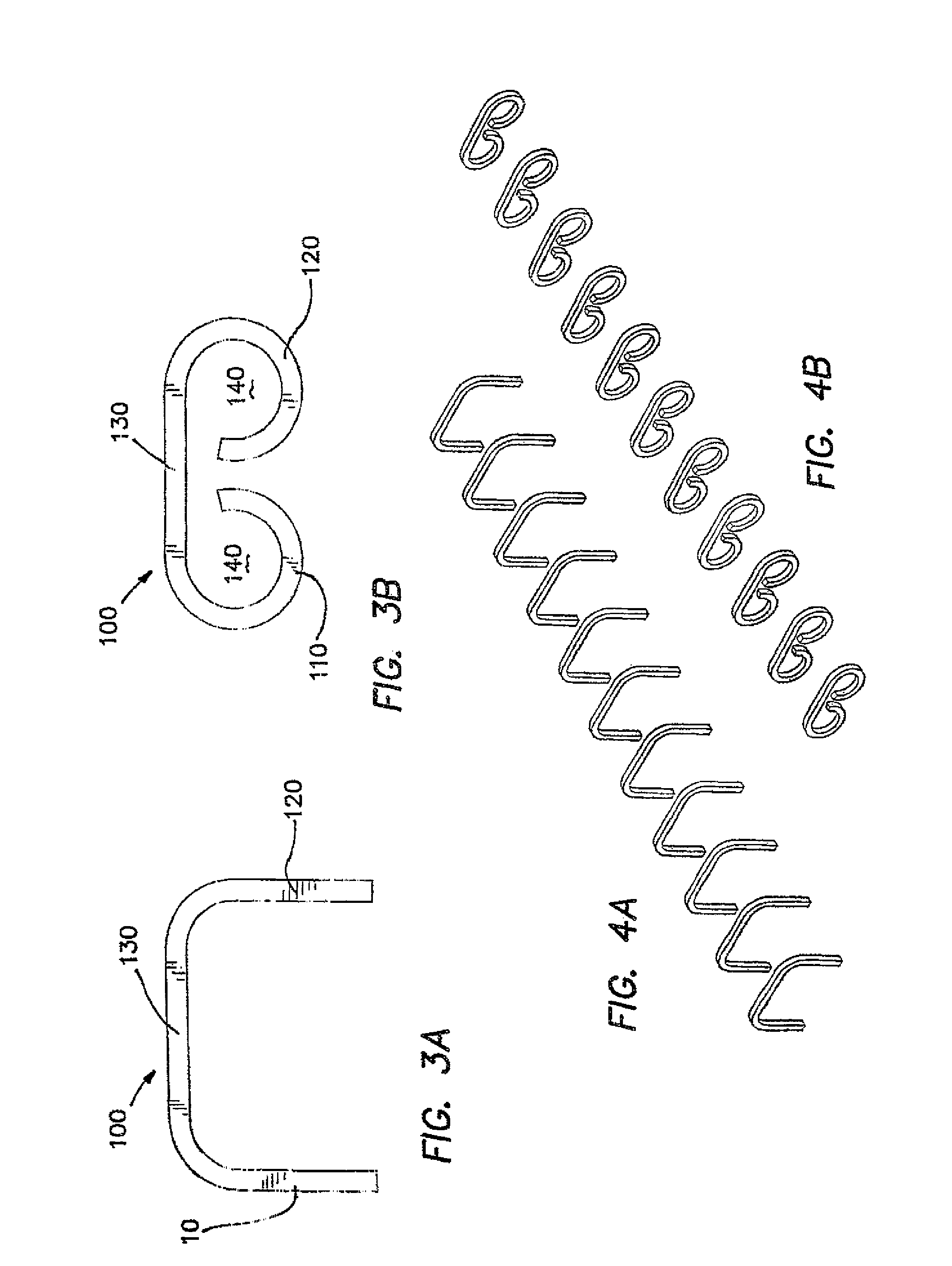Surgical staple-clip and applier
a stapler and applier technology, applied in the field of medical devices, can solve the problems of clip movement or slippage, necrosis of tissue, and heavy bulky staplers used for staple application, and achieve the effect of maintaining nourishment to body tissue and constricting or occlusing
- Summary
- Abstract
- Description
- Claims
- Application Information
AI Technical Summary
Benefits of technology
Problems solved by technology
Method used
Image
Examples
Embodiment Construction
[0043]FIGS. 1 and 2 illustrate a surgical clip 10 of the prior art having a generally open shape including a first leg 15, a second leg 20 and a base 30 connecting the first leg 15 and the second leg 20. The clip 10 can be positioned around a body conduit or passage, e.g., a blood vessel, and compressed using a clip applier 150 as illustrated in FIG. 5(a). The clip applier 150 generally comprises an elongate shaft 155, sized and configured to fit through a surgical trocar port, a distal end 160 having a pair of opposed jaws 165, 167 and a proximal end 170 having a handle 180 to open and close the jaws 165, 167 The clip 10, held in an open condition, is supplied to the jaws 165, 167 either automatically or manually The clip 10 is advanced to a desired site and subsequently closed or compressed. With the first and second legs 15 and 20 properly formed, the jaws 165, 167 can be opened and moved away from the tissue leaving the clip 10 clamped around the tissue. The clip 10 derives its ...
PUM
 Login to View More
Login to View More Abstract
Description
Claims
Application Information
 Login to View More
Login to View More - R&D
- Intellectual Property
- Life Sciences
- Materials
- Tech Scout
- Unparalleled Data Quality
- Higher Quality Content
- 60% Fewer Hallucinations
Browse by: Latest US Patents, China's latest patents, Technical Efficacy Thesaurus, Application Domain, Technology Topic, Popular Technical Reports.
© 2025 PatSnap. All rights reserved.Legal|Privacy policy|Modern Slavery Act Transparency Statement|Sitemap|About US| Contact US: help@patsnap.com



